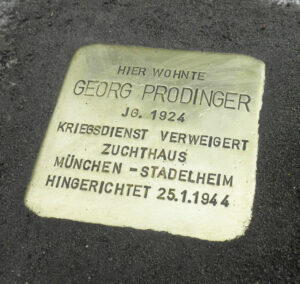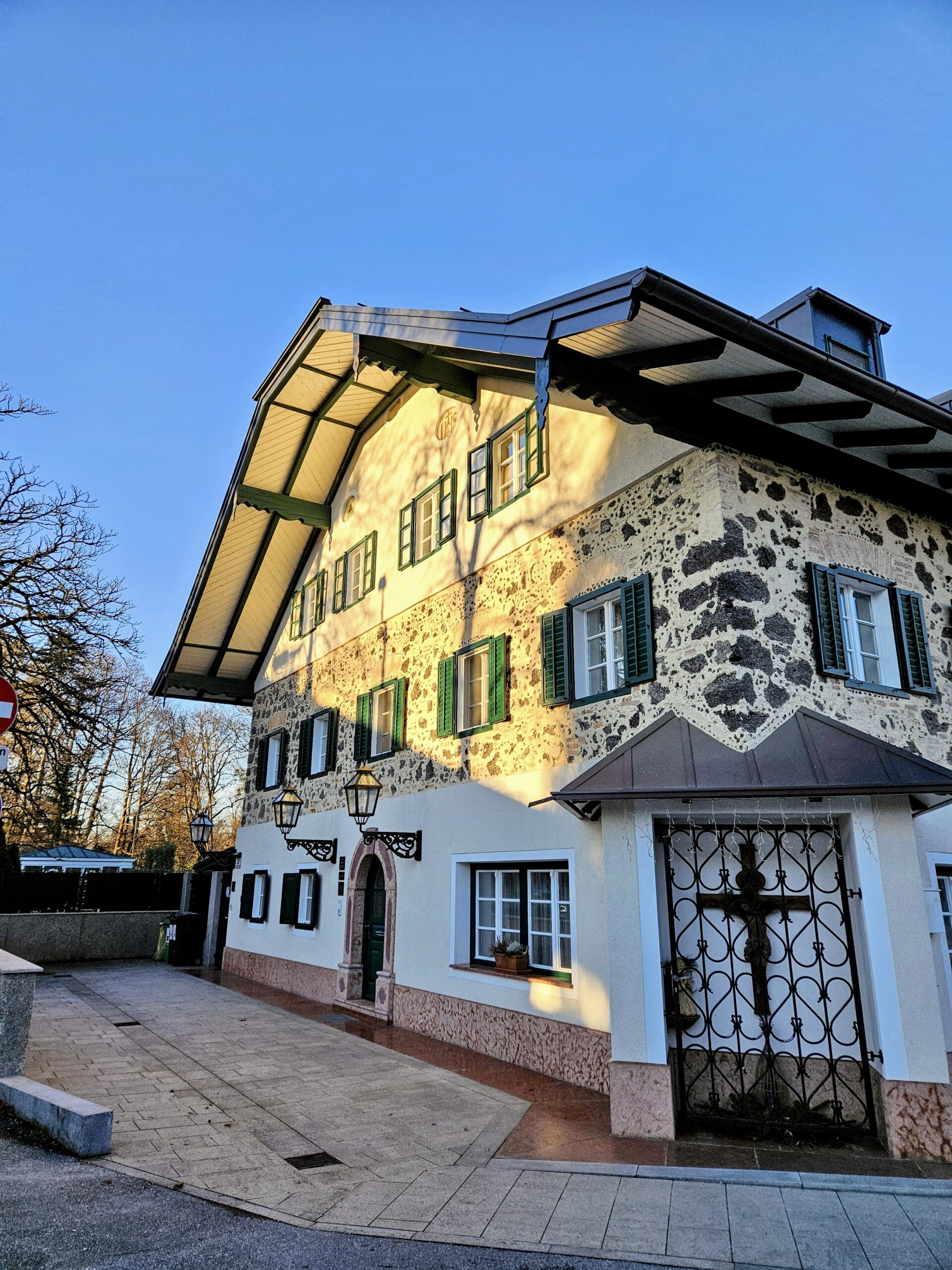Georg PRODINGER was born in Leopoldskron (in the southern part of the city of Salzburg) on June 24, 1924. He was an unmarried, Catholic unskilled laborer (like his father) and he lived with his parents in the Riedenburg neighborhood.
Not much is known about the life of this young man. He was drafted into the German army in Salzburg (militrary district XVIII) at age 19 in 1943 and was a member of the 418th Division’s 137th Reserve Mountaineer Regiment’s 1st Reserve Battalion.
The War Deaths Register reports that on November 18, 1943 a court martial of the 418th Division sentenced Georg Prodinger to death and dishonor for desertion and he was decapitated in the Munich-Stadelheim prison on January 25, 1944. His motives for deserting are unknown given the lack of court martial or victims’ compensation records. His parents died after the liberation of Salzburg.
It is notable that neither Georg PRODINGER, who was executed in Munich, nor the two deserters shot at the military execution ground just south of Salzburg in Glanegg, Karl REITMAIER and Walter BRAUNWIESER, were included in the documentary collection Widerstand und Verfolgung in Salzburg 1934 – 1945 [Resistance and Persecution in Salzburg 1934-1945] published in 1991.
Many victims of Nazi military justice are included in a chapter on »Military Resistance«, including Johann REITER who was shot for insubordination in Vienna-Kagran on July 25, 1940, and Walter Rudle who was shot in Norway on April 23, 1945 while attempting to escape.
Less widely known were the men from resistance circles who had been given long prison sentences and declared militarily unfit before they were forcibly recruited into Penal Unit 9991 and who then deserted from the front lines.
The Austrian deserters from the German Army were only legally rehabilitated many decades after the liberation of Austria, in a law that went into effect on December 1, 2009.
The Stumbling Block memorial for Karl Reitmaier that was laid in Salzburg on March 22, 2012 was the first one in Austria for a deserter from the German army.
1 Penal unit 999 of the German army, commonly called »Penal Battalion 999« contained about 28,000 forced recruits, including many opponents of the Nazis who had been sentenced to prison and loss of civil and political rights; convicts who had been considered unfit for military service were declared fit for service during the war.
They were given »front probation« in Penal Unit 999 and sent to the fronts in North Africa, Greece, the Balkans, or the »Eastern Front«. Some of them, like the railroader Johann Bruckmoser from Salzburg’s Maxglan neightborhood then deserted. Bruckmoser joined the Greek partisans in 1944 and was later taken prisoner by the British army.
He was severely ill when he returned to Salzburg late in 1946 and he died in Salzburg at age 42.
Translation: Stan Nadel
Stumbling Stone
Laid 19.04.2013 at Salzburg, Leopoldskronstraße 35



